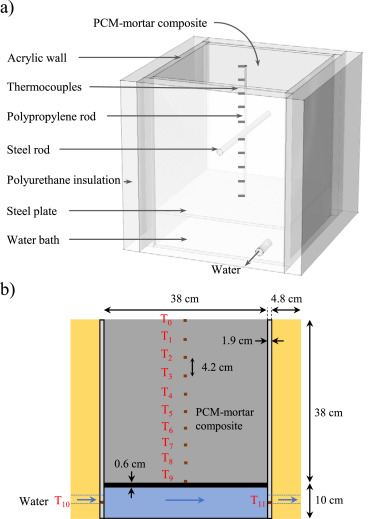Examining the effects of microencapsulated phase change materials on early-age temperature evolutions in realistic pavement geometries
Abstract
This study examines experimentally and numerically the effects of microencapsulated phase change material (PCM) additions on temperature rise and cool-down rate, and the associated impact on reducing the risk of thermal crackingin concrete pavements. Specimens representative of a realistic pavement geometry were exposed to diurnal temperature cycling at early ages while internal temperature evolutions were monitored. In spite of the fact that the lower thermal conductivity of the PCM inhibited heat dissipation, the results showed the presence of PCMs can reduce considerably the temperature rise and cool-down rate in the first 24 h following placement provided the PCM melting temperature is chosen suitably. A transient one-dimensional thermal model of a pavement section suitably captured experimental temperature evolutions and thereby offers the ability to inform the design of concrete pavements containing PCMs that feature early-age thermal cracking resistance.
